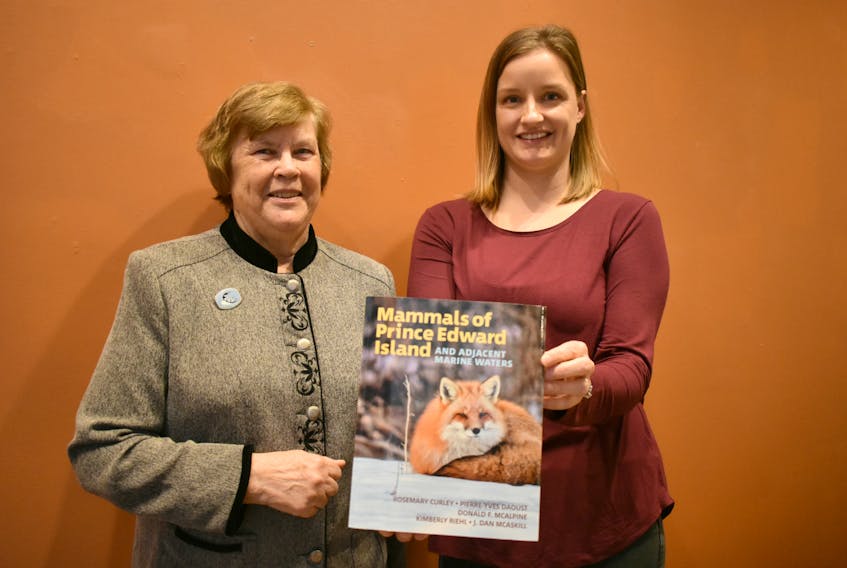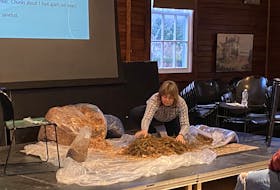While red foxes, skunks and raccoons are common around Summerside, many lesser-known species share Island living spaces.
A launch and talk for the book Mammals of Prince Edward Island and Adjacent Marine Waters held at the Eptek Centre on Sunday afternoon illuminated these common species, including those now long gone.
Rosemary Curley, retired wildlife biologist and Nature P.E.I. president, co-authored the book published by Island Studies Press at UPEI.
She said there are several species quite well adapted to living with humans.
“You have rats in the sewer system, house mice, meadow voles in grassy areas and jumping mice that have large hind legs for bouncing. The deer mice can scurry in your home, especially the older homes. This mouse is adorable, with big eyes and ears. I found one under my kitchen sink.”
In older homes, according to Curley, shrews (a mole-like mammal) will take residence in the attic and prey on mice.
“Bats can also be found around church steeples or home attics. They are important for the ecosystem, eating thousands of insects, including mosquitoes, help pollinating flowers and spreading seeds,” she continued.

When asked about mange in foxes, Curley said “high density” populations in urban areas are helping spread the disease quicker.
“People are feeding them, and that’s why they are coming into these urban areas. Also, back in the 1980s, when I was studying foxes, we believed there was no mange in them. But since then, coyotes have arrived on P.E.I. It appears to me that coyotes brought the mange with them,” she said.
Mange is a skin disease caused by parasitic mites.
“It spreads fast in a high-density population. People think they are kind to the foxes by feeding them, but you are killing them with kindness.”
Kimberly Riehl, a resource management officer with Parks Canada and co-author, researched marine life for the book.
She said, “In the winter there are seals, but in general, Atlantic white-sided dolphin, harbour porpoise, minke whale and pilot whale are the most common around P.E.I.”
The book highlights each species on land and sea, and, in illustrated detail, it outlines the continued need for conservation efforts in P.E.I.
“We needed a book like this because many people have no idea what was here historically or how many mammals we’ve lost, or even how we are finding new ones. People should at least have information on the animals, plants and insects that live near them,” said Curley.
“You cannot look after nature properly if you don’t even know they are here. Knowledge is essential for effective conservation.”
Walrus, caribou, deer, (Canadian) lynx and even black bears once roamed the Island, thanks to a sand bridge that connected to the mainland.
Curley and Riehl gave a presentation about local terrestrial and marine mammals and answered questions during the book launch at 2 p.m.









